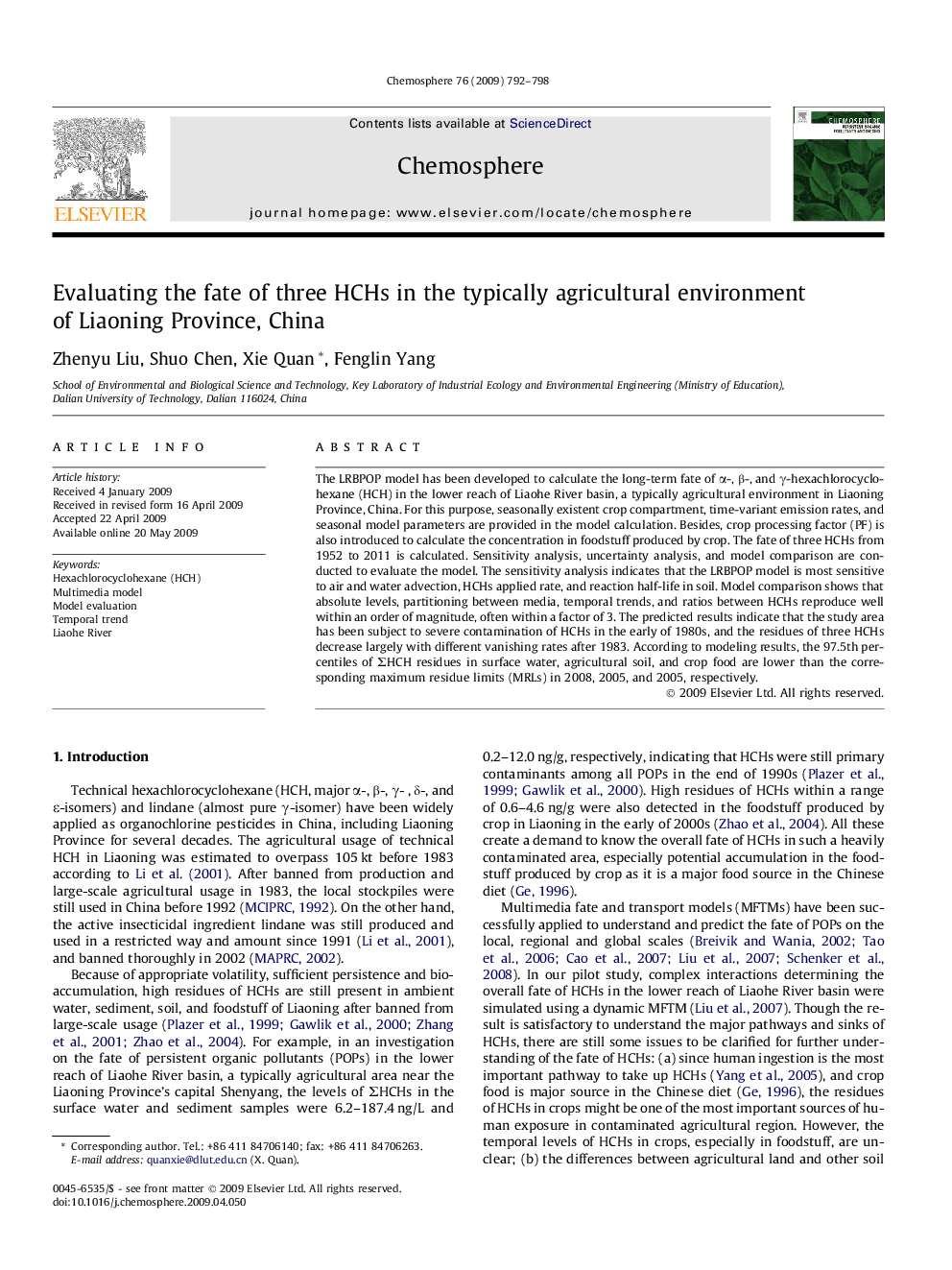| Article ID | Journal | Published Year | Pages | File Type |
|---|---|---|---|---|
| 4412298 | Chemosphere | 2009 | 7 Pages |
The LRBPOP model has been developed to calculate the long-term fate of α-, β-, and γ-hexachlorocyclohexane (HCH) in the lower reach of Liaohe River basin, a typically agricultural environment in Liaoning Province, China. For this purpose, seasonally existent crop compartment, time-variant emission rates, and seasonal model parameters are provided in the model calculation. Besides, crop processing factor (PF) is also introduced to calculate the concentration in foodstuff produced by crop. The fate of three HCHs from 1952 to 2011 is calculated. Sensitivity analysis, uncertainty analysis, and model comparison are conducted to evaluate the model. The sensitivity analysis indicates that the LRBPOP model is most sensitive to air and water advection, HCHs applied rate, and reaction half-life in soil. Model comparison shows that absolute levels, partitioning between media, temporal trends, and ratios between HCHs reproduce well within an order of magnitude, often within a factor of 3. The predicted results indicate that the study area has been subject to severe contamination of HCHs in the early of 1980s, and the residues of three HCHs decrease largely with different vanishing rates after 1983. According to modeling results, the 97.5th percentiles of ΣHCH residues in surface water, agricultural soil, and crop food are lower than the corresponding maximum residue limits (MRLs) in 2008, 2005, and 2005, respectively.
